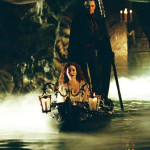
Most of us are aware of the underground sewers of Paris (think: Phantom of the Opera), the underground limestone quarries known as the Paris Catacombs (the final resting place of more than 6 million former citizens), and the underground subway system known as the Métro.
Yet there is another hidden wonder of the Parisian underground. It is the ancient river called Bièvre (or Beaver River). Its origin is a spring fed brook located in Guyancourt, approximately 21 kilometers (13 miles) from Paris. It is southwest of Paris and near Versailles. The Left Bank river enters Paris near the Stade Sébastien Charlety on the border of the 13th and 14th arrondissements. Its terminus is into the Seine River right below the Métro Bridge next to Gare d’Austerlitz. However, the whole time the river flows through Paris, it is completely underground, covered up by concrete.
This river was used by Neolithic tribes, the Parisii tribe, the Romans, and finally, the city of Paris. It was the second most important river to Paris next to the Seine. After Philippe II Augustus built the Left Bank wall in 1210 to protect the city from southern attacks, the Bièvre was isolated outside the city limits. One of its uses was to supply water for irrigation to an abbey as well as fortifications.
As the city grew, the area the Bièvre flowed through became very heavily industrialized. This was the area known as Faubourg Saint-Marcel. This faubourg (suburb) was a working class neighborhood that supported tanneries, textile manufacturers, dye-makers, millers, cobblers, and other assorted industries. The factories built up on its banks dumped garbage, pollutants, dyes, acidic materials, and downright nasty stuff into the river. Then the Industrial Revolution hit and it got even worse. Read More A River Runs Through It (and Under It)

